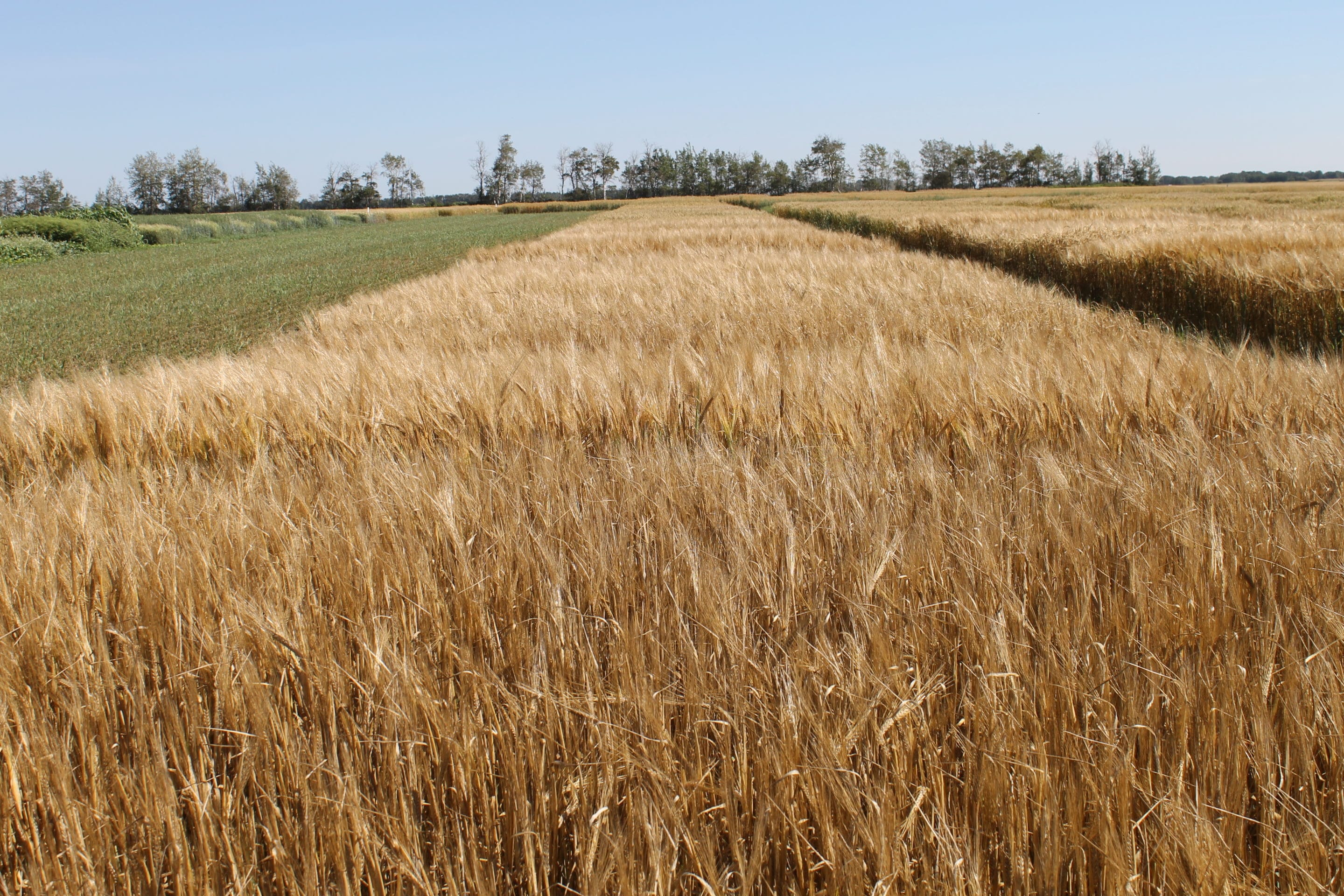What are the regional variety trials and how can you as a farmer use them to grow the best crops?
Editor’s note: This interview has been edited for length and clarity.
Sheri Strydhorst is the cereal and flax regional variety trial coordinator for Alberta. She completed her masters and PhD studies in crop production at the University of Alberta. Strydhorst has worked in various positions in Alberta’s agriculture industry, including executive director of Alberta Pulse Growers and at Alberta Agriculture doing applied cereal agronomic research. As part of her role with the provincial government, she was one of the trial co-operators for the regional variety trials. Strydhorst also serves as the chair of Prairie Grains Development Committee executive committee.
Alberta Seed Guide (ASG): What are the regional variety trials?
Sheri Strydhorst (SS): The Alberta regional variety trials, we abbreviate them to RVTs, are small plot trials, grown at multiple locations. I have cereal RVTs at up to 16 locations across Alberta, and they compare the performance of newly registered wheat, barley, oats, flax and triticale varieties with the performance of well-known check cultivars. New varieties are tested for three years to understand their performance under Alberta’s different environmental conditions.
ASG: Why are the RVTs important?
SS: This data is not novel or unique, it is foundational. This information has been generated for decades and is the cornerstone source of information used when growers are adopting a new variety. The RVTs are third party independent trials which provide growers with a trusted source of variety performance across Alberta.
Some seed companies have their own variety trials and growers often view those as a marketing tool. What the regional variety trials do is they provide information on variety performance conducted under standardized, unbiased conditions in multiple geographies across Alberta. And then the results are published in the Alberta Seed Guide.
ASG: Who are all involved in the RVTs? How do companies become involved and have their crop varieties included?
SS: The regional variety trials are directed by the Alberta Regional Variety Advisory Committee, which is abbreviated to ARVAC. ARVAC coordinates the collection, review and the use of cereal and flax performance data for publication in the Alberta Seed Guide.
What’s great about ARVAC is that it consists of representatives from the seed industry, breeders at the university and college level, breeders from the federal government, crop commissions, and grower groups. The ARVAC membership reviews the data to really make sure the information in the seed guide as high quality as possible.
Seed companies are part of ARVAC, but how they get involved in having their varieties tested is that in mid-February I send out a request for testing package. This package outlines the requirements and cost of the program. By mid-March, seed companies need to let me know what varieties they want to enter into the Alberta RVT program, and then they have to deliver high quality seed, which meets the required specifications, to our contractor who treats and distributes the seed by the very beginning of April.
ASG: Can you share a brief overview of how the annual process for the RVTs goes?
SS: Seed companies provide seed, then the seed is treated, weighed and distributed and sent to the field trial cooperators. I send field trial cooperators field books and plot randomizations. I also host a protocol training meeting with the field trial cooperators to review the scientific protocols that the RVTs must follow.
The trials are planted and grown according to the standardized scientific protocols. Data collection is conducted according to the protocols, and then I physically inspect the site to make sure that the trials are being done according to the protocols. Once the trials are harvested and field books are submitted, I do a quality check on the data. Then a second quality check is done by my crop coordinator. If the data is approved by myself and the crop coordinator, the high quality data is loaded into the historical database where it’s statistically analyzed, tables are generated and the ARVAC membership is invited to review and comment on the draft tables.
In late November, we hold an AGM where each table is vetted and approved by the ARVAC membership. If revisions are needed, they are made. Then the finalized tables are sent to Seed World Group for formatting and publication in the Alberta Seed Guide. The Alberta Seed Guide is then mailed out to all rural mailboxes in January.
ASG: When I get the seed guide in my hands with the RVTs in it, what should I read or look at first?
SS: I advise farmers to look at the tables in their entirety and not just the yield column. When growers look at the tables, I would encourage them to start with the trait that is most challenging on their individual operations.
I’ll go through an example of using the seed guide to select a variety for my family farm. In my area lodging is a huge issue, it’s our number one challenge. So I will go to that lodging resistance column; I scan the column and look for varieties that have a VG rating for standability and narrow it down from there. Then I look at the fusarium head blight resistance of those varieties and then I look at the yield potential of that sub-set of varieties.
It is also super important for growers to read the preamble, that’s the section before the tables. It describes how the trials are conducted. For example, RVT trials do not receive a fungicide application.
I would say that the best solution on each farm is a genetic solution to the problems or the challenges that a grower is facing. Agronomy can fix a lot of things, but you need to start with the best and most appropriate genetics for the challenges that each farm is facing.
ASG: What updates/changes are made to the RVT program year over year to be able to continue providing relevant information to farmers?
SS: One of the biggest things that we’ve done is we keep the check varieties current and meaningful. For example, the spring wheat check is AAC Brandon and I believe that is a variety so many growers have experience with it. It has commanded up to 42 per cent of the CWRS acres in Western Canada. We updated to that variety from Carberry in the January 2022 seed guide.
Then we updated the barley check from AC Metcalf to CDC Copeland. And now we’re going to re-update the barley check for the January 2024 seed guide to AAC Synergy. We’re really trying to stay relevant; we want check varieties that growers have that familiarity with.
We also include two benchmark checks in the trials which are the largest acreage varieties. For example, in oats, although AC Morgan is an old variety, many growers have experienced with this variety, so we included this variety for familiarity.
ASG: Were there any other changes that you made to this year’s trials?
SS: We added a site at Breton, Alberta with the University of Alberta. This gives representation in that west central part of the province, so we’re excited about the addition of that new location. We upgraded the seed treatment that we’re using in the trial, we’re now using Teraxxa F4 from BASF. This gives us better protection against wireworms, along with protection against seed and soil borne diseases, including fusarium.
Another giant thing for this field season is that we have confirmation of funding for the 2023, 2024 and 2025 field seasons. I really want to put a huge shout out to RDAR and WGRF as they provide just over half of the cash funding for this program. This funding helps us all breathe a little easier to know that it will keeping this program going for the next few years.
WHERE ON THE WEB — To view a video with Sheri Strydhorst explaining how to use the tables to pick a new variety visit: https://www.seed.ab.ca/selecting-a-variety-with-the-seed-guide/





